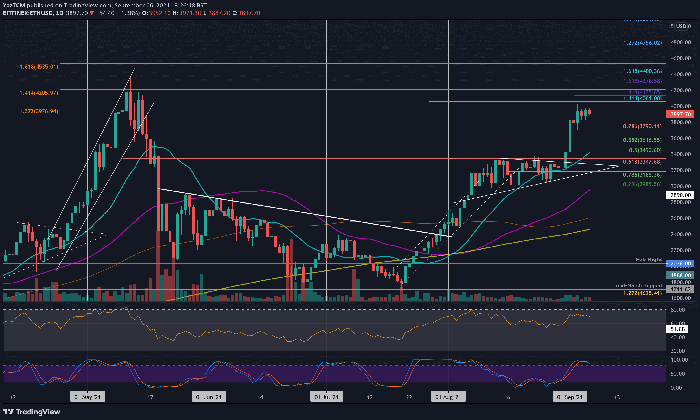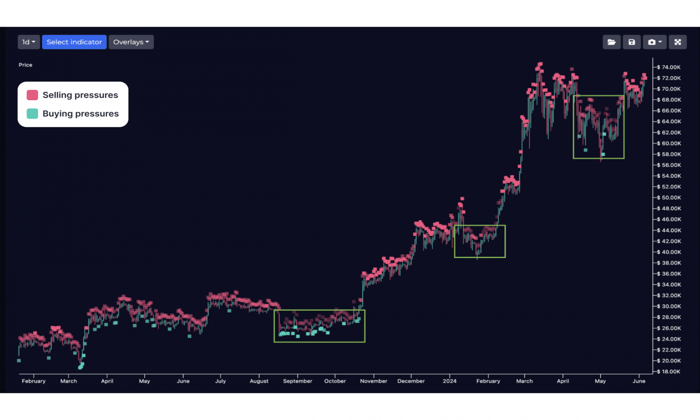In recent weeks, the Bitcoin price drop has sent ripples through the cryptocurrency market, leaving investors reeling as digital assets like Ethereum also experienced significant declines. This downturn saw Bitcoin (BTC) dipping below $77,000 for the first time since November 2024, marking a critical low in its four-month trading history. As the total market capitalization fell below $2.7 trillion, nearly $950 million in BTC liquidation further contributed to the prevailing sense of unease among traders. The ongoing cryptocurrency market decline has prompted questions about the future trajectory of Bitcoin and other major cryptocurrencies. For those watching crypto news closely, understanding the implications of this price drop is essential for making informed investment decisions.
The recent decline in Bitcoin prices reflects broader concerns in the digital currency landscape, as a substantial number of cryptocurrencies, including Ethereum, have also seen major price adjustments. This substantial downturn signifies heightened volatility, further complicated by liquidations that have adversely affected many traders in the market. As participants grapple with fears surrounding the cryptocurrency space, the potential for continued fluctuations looms large, prompting calls for caution. With Bitcoin and its counterparts navigating through challenging waters, investors are keenly interested in how these dynamics will unfold in the coming days. As analysts monitor these developments, insights into market trends and investor sentiment surrounding this economic phenomenon become increasingly valuable.
Bitcoin Price Drop: Analyzing the Recent Decline
The recent Bitcoin price drop has sent shockwaves through the cryptocurrency market, as it fell to a four-month low of $76,700. This unexpected decline has not only tested the resilience of Bitcoin (BTC) but has also impacted the overall sentiment within the crypto community. Many investors are feeling the pressure as their portfolios reflect significant losses, especially after a bullish narrative had taken hold earlier in the cycle. Traders and analysts are now closely monitoring the dynamics of market reactions and potential recovery patterns as BTC struggles to regain lost ground.
Market analysts attribute this downturn to an ongoing cryptocurrency market decline that has seen many digital assets follow Bitcoin’s lead into the red. Ethereum (ETH) also faced a notable dip, briefly dropping below $1,800, which raises concerns about the stability of the second-largest cryptocurrency. While the BTC price currently hovers around $80,000, the volatility of the past few days has led to heightened caution among traders, especially those involved in leveraged positions.
Impact of BTC Liquidation on the Cryptocurrency Market
The Bitcoin price drop has been exacerbated by a surge in BTC liquidation, which saw nearly $1 billion wiped from the market in just 24 hours. According to reports from CoinGlass, over 330,000 high-leverage positions were liquidated, of which Bitcoin trades accounted for approximately $318 million. This wave of liquidations highlights the fragility of trader sentiment during this tumultuous period, where the urge to mitigate losses has resulted in cascading sell-offs, further entrenched by the recent price declines.
The consequences of this liquidation rush are significant, as many traders found themselves at the mercy of market movements. With the largest liquidation order coming in at a staggering $5.26 million affecting a single trader on Bybit’s BTC/USDT pair, the fear of further market instability looms large. The recent fallout instructs traders to be vigilant as the cryptocurrency market attempts to find its footing amidst worsening conditions.
Ethereum Price Drop: A Ripple Effect from Bitcoin
The Ethereum price drop is a direct reflection of Bitcoin’s recent struggles, signalling an interdependence between top cryptocurrencies. As BTC fell to its lowest value in months, so did ETH, which briefly dipped below the critical support level of $1,800. This price action raises important questions about the overall health of the crypto market and whether Ethereum can decouple from Bitcoin’s performance in the face of potential recovery.
Traders and investors should acknowledge that movements in Bitcoin often set the tone for the broader market, including Ethereum. The symbiotic relationship between the two cryptocurrencies means that Ethereum’s future performance is likely tethered to Bitcoin’s attempts to rebound. As key economic factors, including the upcoming US CPI data and geopolitical tensions unfold, the Ethereum price trajectory will be closely watched by market participants.
Future Projections: What Lies Ahead for Bitcoin and Other Cryptos?
As we look forward, the future of Bitcoin and the wider cryptocurrency market remains uncertain, especially after experiencing a price drop and liquidation surge. Market analysts predict that increased volatility will continue, influenced by external factors such as peace negotiations in Ukraine and fiscal policies from the Federal Reserve. These developments may further impact investor confidence and market dynamics.
In the face of these uncertainties, investors are urged to develop strategies that adapt to this volatile environment. Staying informed through reliable crypto news sources and maintaining a diversified portfolio can be beneficial. As the market witnesses extreme price fluctuations, understanding the implications of Bitcoin’s performance on other cryptocurrencies remains crucial for navigating the coming weeks.
The Role of Market Sentiment in Cryptocurrency Trading
Market sentiment plays a pivotal role in cryptocurrency trading, particularly in times of significant price movement. The recent Bitcoin price drop has not only affected the trading patterns of Bitcoin but also altered the psychological landscape of traders across the board. Fear, uncertainty, and doubt (FUD) can lead to rapid decision-making, often with detrimental effects. When Bitcoin experiences a downturn, traders frequently respond preemptively, increasing the likelihood of mass sell-offs.
Integrating tools for gauging market sentiment—such as fear and greed indexes—can help investors make more informed choices. Engaging with community discussions on social media platforms and forums can provide insights into prevailing attitudes, aiding traders in navigating the waves of the cryptocurrency market. Understanding the emotional undertones that accompany these price fluctuations is essential for successful trading.
Exploring the Factors Behind Cryptocurrency Market Declines
A cryptocurrency market decline often stems from a confluence of factors influencing investor behavior and market conditions. In the case of the recent Bitcoin price drop, several interconnected elements contributed to the wider downturn in digital asset valuation. A downturn in overall economic conditions, legislative scrutiny, and market reactions to macroeconomic indicators can trigger sell-offs among retail and institutional investors.
Moreover, the cryptocurrency market is particularly sensitive to market news, with narratives often propagated through social media impacting price movements. Investors should be aware that shifts in market sentiment can occur rapidly. By keeping an eye on both technical indicators and fundamental developments, traders can better navigate these challenging waters.
Leveraged Trading in the Context of the Current Market
The current market dynamics have highlighted the risks associated with leveraged trading, particularly amid a significant Bitcoin price drop. During turbulent periods, traders who utilize high leverage may experience liquidations that contribute to intensified market volatility. As seen in the surge of nearly $1 billion in liquidations recently, high-leverage positions can quickly turn into substantial losses within a matter of hours.
Given these challenges, it’s crucial for traders to manage their exposure responsibly. Continued education on the principles of risk management, along with a thorough understanding of their trading platforms, can make all the difference in ensuring longevity in the volatile cryptocurrency space. Awareness of market trends and adopting a conservative approach can help mitigate the risks inherent in leveraged trading.
Navigating Cryptocurrency Regulations in a Declining Market
Navigating cryptocurrency regulations has become increasingly important, especially in the wake of market declines like the recent Bitcoin price drop. Regulatory frameworks can significantly impact market sentiment, as traders often react to news regarding potential governmental restrictions or compliance requirements. As the market faces pressure, understanding the evolving regulatory landscape will be key for market participants.
Staying informed about legislative developments and engaging with educational resources can help both new and experienced traders understand how regulations might affect their investments. Embracing compliance as a critical aspect of trading can lead to healthier market conditions and help pave the way for a more stable cryptocurrency ecosystem in the future.
The Psychological Impacts of a Bear Market on Cryptocurrency Traders
The psychological impacts of a bear market, such as the one following the Bitcoin price drop, are profound and far-reaching. Traders often experience a wide range of emotions, including fear, anxiety, and frustration, especially as their investments face declines. Understanding the interplay of these emotions and their potential influence on trading behavior is essential for long-term success.
To navigate the psychological challenges of trading in a downtrend, traders can cultivate a mindset focused on resilience and adaptability. Setting realistic goals, practicing mindfulness techniques, and engaging with supportive communities can foster a healthier approach to trading, ultimately helping investors manage their emotional responses during turbulent market conditions.
Frequently Asked Questions
What caused the recent Bitcoin price drop to a low of $76,700?
The recent Bitcoin price drop to $76,700 is primarily attributed to a significant downturn in the cryptocurrency market. This decline has impacted not only Bitcoin but also other major cryptocurrencies like Ethereum, which briefly fell below $1,800. Market factors include increased liquidations, with over 330,000 positions liquidated in a 24-hour period, signaling a bearish trend in the crypto market.
How does the Bitcoin price drop affect the overall cryptocurrency market decline?
The Bitcoin price drop often serves as a bellwether for the entire cryptocurrency market. As Bitcoin recently plummeted to a four-month low, the total market capitalization fell below $2.7 trillion, dragging down Ethereum and many other cryptocurrencies. This correlation indicates that Bitcoin’s price movements can significantly influence overall market sentiment and trend.
What are the implications of the $950 million Bitcoin liquidation during the price drop?
The $950 million worth of liquidations during the recent Bitcoin price drop highlights the extreme volatility and risk associated with trading cryptocurrencies. High leverage positions contributed to this surge, with Bitcoin trades accounting for around $318 million of the total liquidations. Such large-scale liquidations exacerbate market declines, leading to increased selling pressure and further price drops.
Is the current Bitcoin price drop expected to recover soon?
While it’s difficult to predict short-term price movements, analysts suggest that current market conditions could lead to increased volatility. Factors such as geopolitical developments, upcoming economic data releases, and central bank meetings will likely influence Bitcoin’s recovery from its recent price drop. Traders should stay informed on these developments for insights into market recovery.
What should investors consider during a Bitcoin price drop?
During a Bitcoin price drop, investors should assess their risk tolerance and investment strategy. It’s crucial to consider market trends, potential for further declines, and the broader economic landscape. Maintaining a diversified portfolio and staying informed about crypto news can help mitigate risks associated with Bitcoin’s volatility and ensure better decision-making.
| Key Points | Details |
|---|---|
| Bitcoin Price Drop | BTC has dropped to a four-month low of $76,700. |
| Market Decline | Cryptocurrency market cap fell below $2.7 trillion; major altcoins like ETH, XRP, ADA, and SOL also faced declines. |
| Liquidations Surge | Over 330,000 leveraged trading positions liquidated in the last 24 hours, totaling nearly $1 billion. |
| Major Liquidation | The largest single liquidation involved a BTC/USDT trade costing $5.26 million. |
| Future Volatility | Expect increased volatility due to potential geopolitical events and upcoming economic announcements. |
Summary
The recent Bitcoin price drop has sent shockwaves through the cryptocurrency market, as BTC fell to a low of $76,700, the lowest level seen in four months. This decline is part of a larger trend affecting a wide array of digital assets, leading to significant liquidations and market volatility. Investors should remain vigilant as the market gears up for potential fluctuations in the coming days.
The recent Bitcoin price drop has sent shockwaves throughout the cryptocurrency community, marking a significant downturn in the digital asset market. As Bitcoin (BTC) fell to a low of $76,700, it became clear that the bullish narrative surrounding the cryptocurrency was facing unprecedented challenges. The broader cryptocurrency market decline saw major players like Ethereum (ETH) also suffer, with Ethereum price dropping below $1,800. This turmoil triggered a wave of BTC liquidation, pushing the total liquidated amount to nearly $1 billion in just one day. With the market capitalization of this sector now under $2.7 trillion, crypto news today paints a picture of a market battling for stability amid ongoing volatility.
In recent times, the digital currency landscape has witnessed a substantial decline, epitomized by the recent drop in Bitcoin’s valuation. This downturn can be contextualized by terms such as crypto market correction, reflecting the challenges faced by traders and investors alike. Major assets like Bitcoin and Ethereum have been caught in this downward spiral, prompting discussions around the implications for the overall crypto ecosystem and its future trajectory. The rapid liquidation of positions indicates the heightened risks associated with leveraged trading during such turbulent periods. As analysts and market watchers keep a close eye on these developments, the broader implications for cryptocurrency adoption and investment strategy remain a pivotal topic of interest.















Leave a Reply